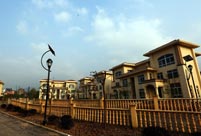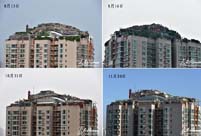Today it is widely understood that free trade, cooperation and exchange of information will eventually contribute to the mutual prosperity of countries, while inward orientation and isolationism, and conflicts and wars destroy economic assets and damage people's lives. In today's interconnected world it is impossible to succeed by destroying the other.
The Great Silk Road should serve as a prototype of a new phase of modern international cooperation.
That is why the initiative of the President of the People's Republic of China
H.E. Xi Jinping to revive the legendary Silk Road as a new model of cooperation in Eurasia -- between Kazakhstan and China -- proposed during his recent state visit to Astana, is of great interest to Kazakhstan.
As discussed during government negotiations at the highest levels, the ancient Silk Road can find new strength and shape through the creation of an economic corridor through the joint efforts of our countries aimed at building up political contacts, developing the road network, strengthening trade relations, activating currency flows, as well as cultural and information exchange.
Such ambitious goals not only correspond to the great past of our countries, they can be the key to future prosperity and development. There are several major reasons for this:
in today's world the revived Silk Road would create not only well-developed hard transport infrastructure for transit of goods and bilateral trade, but also soft infrastructure, including a favorable business climate fostering the mobility of production resources and implementation of joint projects;
China’s economy is the second largest in the world and still vibrantly growing. The revival of the ancient Silk Road will contribute to the full development of China's trade potential with the countries of Eurasia.
Maritime transport certainly has developed as an alternative to the ancient Silk Road from China to Europe. However, it has its own disadvantages. Today, according to UNCTAD, 80% of world trade passes through about thirty increasingly busy seaports. This leads to congestion, delays and ultimately higher costs throughout the supply chain to the final consumer. These dynamics have led to the “desertification” of trade in areas remote from industrial centers and in countries that do not have access to the sea, hindering their economic development.


 Finland has more eggs in the Chinese basket than any other
Finland has more eggs in the Chinese basket than any other In pictures: PLA's digital equipment
In pictures: PLA's digital equipment  Protesters demonstrate during UN Climate Change Conference in Poland
Protesters demonstrate during UN Climate Change Conference in Poland  Self-made farmer billionaire donates 69 villas at hometown
Self-made farmer billionaire donates 69 villas at hometown Demolition of bizarre rooftop villa in Beijing still in progress
Demolition of bizarre rooftop villa in Beijing still in progress Service seminar for E China train attendants
Service seminar for E China train attendants  Supermodel-turned-designer
Supermodel-turned-designer Cheerleaders light up CBA regular season
Cheerleaders light up CBA regular season  Finland--anytime you want is right time to go: Ambassador
Finland--anytime you want is right time to go: Ambassador Maritime counter-terrorism drill
Maritime counter-terrorism drill Youths in Night club: photo story
Youths in Night club: photo story Models dazzle at Int'l Yacht Model Pageant
Models dazzle at Int'l Yacht Model Pageant  How to apply for a green card in China
How to apply for a green card in China Annual Santa Claus parade held in Canada's Montreal
Annual Santa Claus parade held in Canada's Montreal Weekly Sports Photos
Weekly Sports PhotosDay|Week|Month